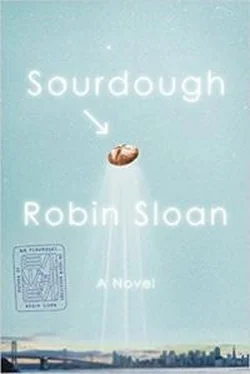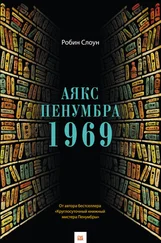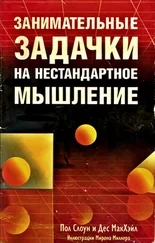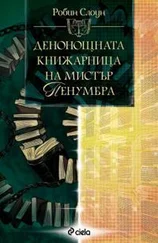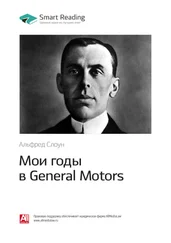Olive trees lined the long driveway that led from Road 23 into the facility. Beneath the trees, fruit rotted in dark piles.
* * *
“THIS FACILITY USED TO BELONG TO GALLO,” Jaina Mitra said. “They made like ten percent of the country’s wine here.”
A man was crossing the parking lot to meet us. He was tall and bald and frighteningly gaunt, waving energetically, his lips pressed flat in an enthusiastic smile.
“Dr. Mitra! Yes! And our guest of honor!”
“This is Dr. Klamath,” Jaina Mitra said. Her face was cheery but her eyes betrayed a sense of duty. “Founder and CEO of Slurry.”
“I prefer Chief Nutrition Officer!” He gave Jaina Mitra a feather-light hug, then offered his hand to me. Taking it, I encountered a palm of extraordinary dryness.
“Come in, come in,” he said. “See the sights. Dr. Mitra told me you’re a Slurry subscriber—well, it all comes from here.”
“I was a subscriber,” I said. “I haven’t had it in a while.”
He grinned, unbowed. “It’s getting better all the time!”
Inside, the air was dense and smelled slightly sour. Every surface, walls and ceiling, was braided with pipes painted primary colors, some as skinny as my wrist, others fat enough to admit Jaina Mitra’s Tesla, all connecting an array of enormous vats marked with cryptic identifiers. It looked like a power plant or a refinery. In a way, it was both.
Klamath spun around and continued to speak as he led us, walking backward, toward one of the vats. This was not his first tour.
“Farmers in Fresno talk about yield per acre. That’s economic, not human. So what if you’re growing four tons of alfalfa per acre? Talk to me about people . How many people’s lives are you supporting? How many healthy lives?”
That seemed like a reasonable question.
“Slurry is one hundred percent vertically integrated here, so I can tell you, this unit”—he patted a mammoth vat affectionately—“supports two thousand people every week. Two thousand! ”
Two thousand students lived in my college dorm. I imagined all of them lined up in front of the vat, bowls in hand, waiting to get their daily ration of dystopia.
“We put in just five thousand dollars’ worth of raw ingredients. As Dr. Mitra can tell you, it used to be a lot more. We’re making it more efficient. You know what my goal is? Everybody says this is crazy, but I say it’s physics. An average person uses about three kilowatt hours of energy every day. Just to live. You know the price of three kilowatt hours in California? Forty-five cents. That’s our goal. It ought to be just like plugging yourself into the wall.”
“That sounds pretty robotic,” I said. “And I say that as someone who likes robots.”
“I just want everybody to be healthy,” Klamath said. His bulldozer enthusiasm faltered; I detected a note of weariness. “We should be way past this already. I want people to have time to do the things they want, rather than work to make money to buy food, or scrounge around in the kitchen.”
He stopped, and steepled his fingers theatrically.
“But I know people don’t want to eat gray goo. I do. That’s why Dr. Mitra’s work is so important. That’s why we want to acquire Lembas.”
Ah. It came into focus.
Klamath was leading us through the vats, toward the farthest corner of the facility.
“Those fields you drove through? That whole system? It’s a dead end.”
It seemed like a rather large and vibrant dead end.
“Here, we can program a yeast to make anything. Gasoline. Heroin.”
Hummus?
“Not yet. But damn it, we are close . Dr. Mitra’s work is the key. Right now, I can get one organism going … a yeast, or a bacteria like E. coli . But we want more complex products. We need to assemble and train whole communities.”
Like Lembas.
“Like your starter,” Jaina Mitra said lightly.
Listening to Dr. Klamath talk, hearing him slam the old system, seeing the resources he commanded, it struck me: Was I speaking to Mr. Marrow?
* * *
THE VAT WAS THE SAME SHAPE as the one in Jaina Mitra’s lab, but ten times as large, a monstrous egg of shining stainless steel. A neat sign on the front read COMMUNITY PRODUCTION TEST, which sounded sort of nice. Healthy.
Klamath patted the vat affectionately. “It’s cute, right? We run our wacky experiments in these little ones. I want to give it to Dr. Mitra. And this, too.” He stepped over to a plastic-clad box the size of a mini-fridge—another flawlessly anonymous piece of biotech gear. “This is brand-new, which is why it looks like shit. It can build microorganisms from scratch. We hollow out a yeast, squirt in some new DNA, boot it up.”
I frowned. “You just hollow … out…”
Dr. Klamath gave the box a quick caress, let his hand linger. “It’s a printer for life.”
Jaina Mitra extended a finger to touch it, too. Their affection for this anonymous machine was palpable. “These are impossible to get.”
I looked up and considered the vat. It was bigger than my apartment.
“You can’t just feed my starter flour and water,” I said. “Not if you want to make this much. It likes King Arthur.” I paused. “You can get it online.”
“Or we could try feeding it Slurry,” Jaina Mitra said, and Dr. Klamath nodded gamely. Would the Clement Street starter eat Slurry? Possibly. Would its farts be as fragrant as mine had been? Probably.
Dr. Klamath squared himself to me. “Here’s the thing. Before I give Dr. Mitra the go-ahead to get this revved up, we need some legal protection. No big deal, just something that says you give us the right to exploit this biological IP that you control, et cetera, et cetera. I’ve got the contracts ready. I want to make it worth your while, and give you a stake in the outcome of this project. If you have questions, that’s why we’re here. I hope you find this as exciting as we do.”
Jaina Mitra’s face grew solemn. “My deal with Mr. Marrow was that he got twenty percent of Lembas. If this is as big as Dr. Klamath thinks it can be … that could mean millions of dollars for the Marrow Fair.”
Hearing that sum, Dr. Klamath made a face as if he’d just eaten something bad. “We’re not playing for pocket change here. We’re playing for the whole future of food.”
But was this deal exclusive?
Dr. Klamath rolled his eyes. “What? No. Keep baking. It’s great. I mean, I don’t eat bread, but Dr. Mitra says it’s great.”
Walking back toward the lobby, I considered the vastness of the facility. If Jaina Mitra’s work was successful—if she used whatever talent was hidden in the Clement Street starter to stabilize and support Lembas, to make it viable—it was possible that all of these vats might be turned over to its production.
This was scale.
It was two thousand people sustained by a single vat.
For the Clement Street starter, it would be a conquest unimaginable.
* * *
ON THE RIDE HOME, Jaina Mitra explained that if I agreed to license the Clement Street starter to her, I would receive fifty thousand shares, or five percent, of Lembas Labs, an LLC set to be acquired, soon, by Slurry Systems of Fresno, California.
“Those shares could be worth a lot of money,” she said.
There was my nineteen million dollars. I could split it with Beoreg—his reward for sharing the starter—and his restaurant could have very nice tables, indeed.
I thought about it all the way through Madera, Patterson, Tracy, and Livermore, and when Jaina Mitra pulled her Tesla onto the airfield in Alameda, I had my answer.
“I’m sorry. I can’t.”
Her face crumpled. “Were we not clear? You have something very, very important.”
Читать дальше
